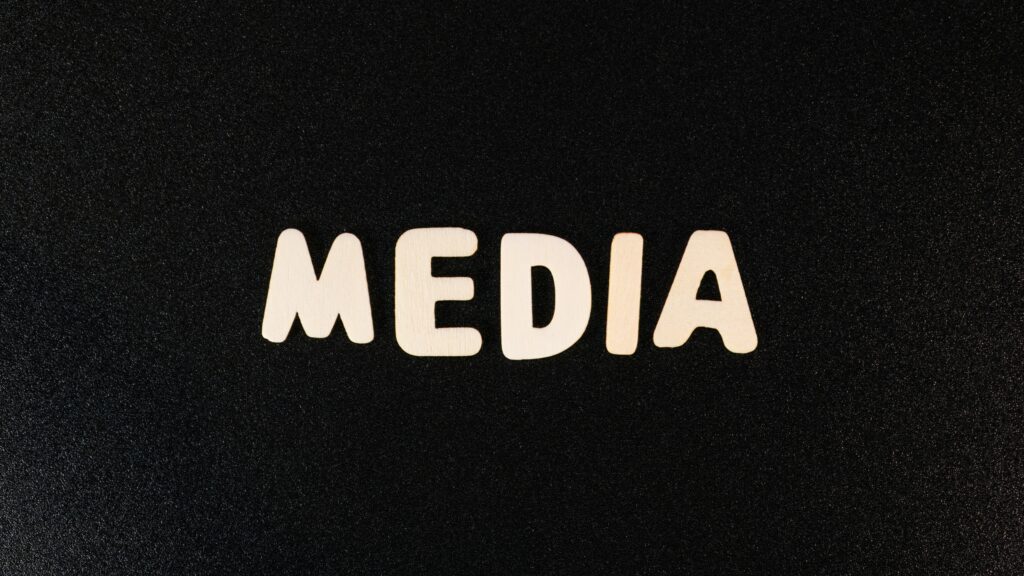Introduction
A Month That Moved Fast
This month proved to be pivotal in the media industry—not just because of big headlines, but because of the accelerating pace of transformation across every sector. From strategic shakeups in streaming to surprising partnerships and ongoing struggles in traditional broadcast, the momentum hasn’t let up.
What Made This Month Stand Out
Several key trends and developments punctuated the month:
- Strategic Shifts: Platforms redefined their content direction and business models to adapt to changing viewer demands.
- Surprise Moves: Sudden mergers, executive departures, and bold pricing strategies surprised even seasoned analysts.
- Cross-Industry Influence: Moves in tech, advertising, and digital infrastructure deeply impacted the content ecosystem.
These shifts signal that media is no longer siloed—it’s increasingly interconnected with broader industry dynamics and global economic patterns.
What You’ll Gain From This Recap
By reading this month’s report, you’ll walk away with:
- A concise summary of the most important developments
- Insight into how each shift could affect the future of content, platforms, and ad strategies
- Strategic context to help you make sense of what’s happening behind the headlines
Stay sharp—this recap will help you track emerging patterns before they hit the mainstream.
Streaming Continues to Reshape the Landscape
The streaming wars aren’t cooling—they’re consolidating. This month saw fresh mergers across regional and global markets, with smaller platforms getting scooped up by bigger players looking to tighten their grip. Pricing is also on the move. Multiple services quietly rolled out fee hikes or introduced new ad-supported tiers, effectively forcing subscribers to choose between paying more or watching more ads.
Original content initiatives are starting to look like high-stakes poker. Budgets are inflating fast, but so are the risks. A single failed series can burn through tens of millions, and even winning releases struggle to hold attention in a saturated feed. Some platforms are pulling back, shifting to fewer, safer bets. Others are investing big—hoping exclusive IP will justify their rising costs.
Meanwhile, the way people subscribe is changing. Viewers are growing tired of juggling six or seven monthly charges. Bundled offerings—either through telecoms, hardware partners, or direct bundles between services—are gaining traction. They offer simplicity, and in many cases, value that standalone plans no longer deliver.
For a deeper analysis, check out How Streaming Services Are Reshaping Content Distribution.
Traditional Media’s Response Moves Into High Gear
The traditional TV ecosystem is shedding weight fast. Network consolidations are no longer a trend—they’re a necessity. Major broadcasters are either merging with former competitors or spinning off assets to cut costs and stay relevant. A leaner organizational structure is the strategy now, with fewer brands managing more diversified content portfolios.
Cable subscriber attrition continues, and it’s not slowing down. Recent reports show another 7% quarter-over-quarter drop, pushing total declines past 40% over the last five years. It’s not just cord-cutters driving this—it’s cord-nevers, younger viewers who never paid for cable in the first place. The future of pay TV, at this pace, is less a question and more a countdown.
Legacy players are adapting. Some are doubling down on free ad-supported streaming channels. Others are testing hybrid models—light bundles with both on-demand and linear options. The experiment is clear: find a way to monetize content without depending on old infrastructure. The message behind the moves? Adapt fast or age out quietly.
Advertising Gets Smarter, But More Fragmented
Programmatic ad buying isn’t new—but how it’s performing lately is. In the past quarter, performance metrics across several platforms show a clearer favoring of real-time bidding tied to user behavior, not just metadata or demographics. This means brands are now chasing moments, not just markets. That makes campaigns more reactive, but also less predictable in outcome. Efficient if dialed in, wasteful if not.
At the same time, platform-first sponsor strategies are gaining traction. Think advertisers designing campaigns specifically for Reels, Shorts, or TikToks—not repurposed content. This drives better engagement but pressures creators to stay deeply familiar with native tools, constantly updating formats to stay relevant. Brands want creators who can move at the pace of the platform itself, not just show up and post.
The real standout trend? Creator collaborations and branded content are becoming central strategy, not side gigs. Advertisers are betting more on trusted voices to tell their stories—whether it’s beauty tutorials blurred into product drops or vloggers weaving sponsorships seamlessly into travel logs. The audiences aren’t just accepting it—they’re expecting it, as long as the content stays real. In this climate, transparency, tone, and value matter more than ever.
In short: Advertising’s evolving fast. If you’re not updating your playbook every quarter, you’re behind.
Layoffs, Restructures & Leadership Shakeups
The past month saw a shakeout at the top of several legacy and digital-first media firms. C-suite exits included the abrupt departure of two longtime publishing CEOs and a widely watched editor-in-chief stepping down from a major national magazine. On the flip side, incoming appointments signal a pivot—less toward traditional journalism pedigree, more toward digital fluency and monetization chops.
Budget realignments are hitting hard across editorial teams. Some newsrooms saw deep cuts in investigative units and longform production, with resources redirected toward video and sponsored verticals. The message is simple: if it doesn’t convert or scale, it goes. This isn’t just trimming fat—it’s a redefinition of what modern newsrooms are built to do.
Across the sector, there’s a growing sense of fatigue. Layoffs are now less shocking, more routine. But it’s not all loss. Talent previously anchored in traditional roles is surfacing in streaming startups, creator platforms, and consultancy gigs focused on content strategy. The media workforce is spreading out—more fluid, more hybrid, and more entrepreneurial.
Leadership turnover and budget shifts aren’t just internal dramas—they’re signals. What we’re watching is a slow, complicated reallocation of media power, away from old structures and toward purpose-built digital ecosystems.
Innovations Worth Watching
2024 is seeing a rise in platforms playing outside the mainstream. While giants like YouTube and Netflix dominate headlines, the real experimentation is happening on the edges.
Audio-based spaces, like Spotify’s podcast spin-offs and voice-note driven communities, are starting to carve out their own niches. Long-form newsletters are back as a slow-burn loyalty tool—Substack, Beehiiv, and newer players are helping creators go deeper and monetize directly. And in the visual world, vertical-first apps beyond TikTok are getting real traction in Gen Z and creator circles. Think 90-second reels, built for discovery-first experiences and made-for-mobile formats.
Then there’s AI. Not in some flashy sci-fi sense, but in the subtle ways it’s reshaping workflows. Content is being planned, tested, and tuned with predictive analytics—what topics will hit, what sentiment drives shares, how to maximize impact per post. Tools like ChatGPT and Midjourney aren’t just toys—they’re becoming baseline skills.
And finally, personalized viewer experiences are coming into focus. Think AI that molds a video feed to your viewing mood or recommends newsletter content based on your recent clicks. It’s early, but the tech behind this isn’t theoretical anymore.
These innovations aren’t about replacing traditional models. They’re about optionality. For both legacy media and scrappy independents, these are the tools and spaces that reward experimentation and speed.
Looking Ahead
On the Radar for Next Month
The pace of change in the media industry isn’t slowing down—and neither should your awareness. Here are the major developments and signals to keep an eye on as we move into next month:
- Financial earnings reports: A close look at quarterly earnings from key players will indicate how streaming, advertising, and production strategies are performing in real time.
- Consumer backlash or behavior shifts: Watch for signs of subscriber fatigue, ad-blocking trends, and response to pricing hikes or content changes.
- Regulatory updates: Antitrust discussions, media ownership laws, and global data policies may shift corporate strategies—especially in cross-border markets.
Stories That Could Reshape Q3
Potential headlines and market pivots that might define the coming quarter:
- A major studio or platform acquisition
- A viral content movement impacting advertising or licensing models
- New government regulations affecting platform monetization or content moderation
These indicators could lead to major adjustments in how companies package content, engage audiences, or drive revenue.
The Big Picture
The media landscape isn’t just changing—it’s mutating. The winners will be:
- Fast adapters with flexible business models
- Creators and companies that focus on direct audience relationships
- Brands willing to experiment, measure, and iterate
Successful players won’t cling to legacy models—they’ll evolve in rhythm with new viewer habits, tech capabilities, and monetization paths.




